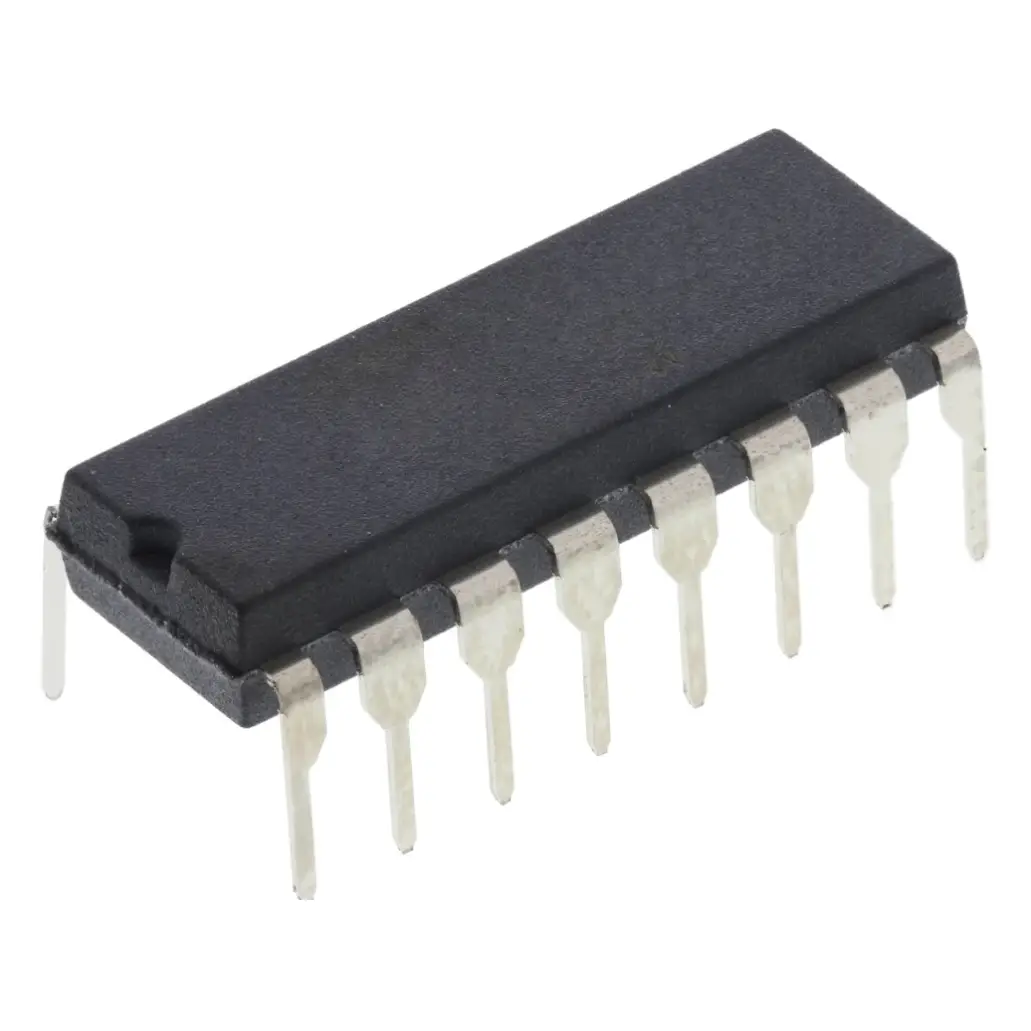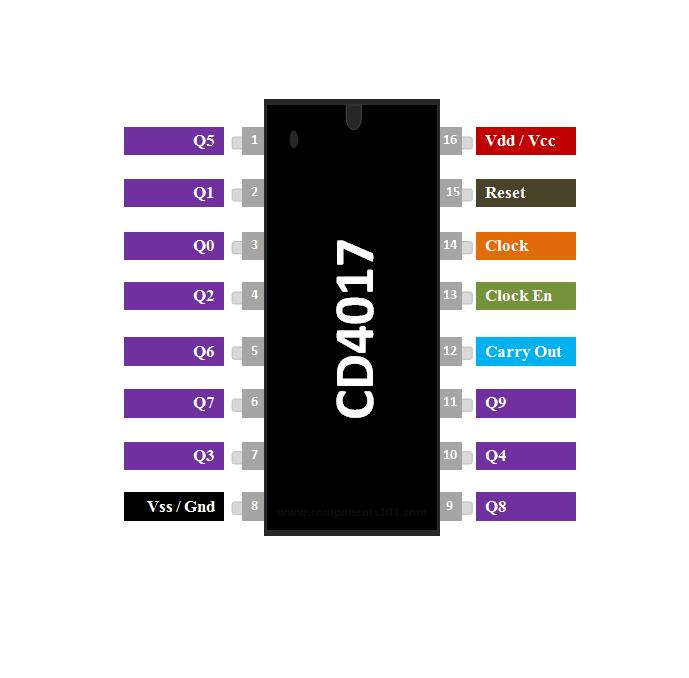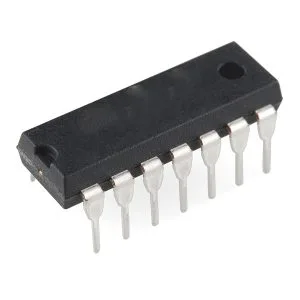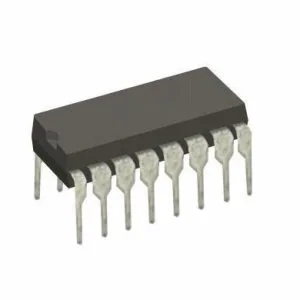4017 IC Hex D-Type Flip-Flop
The CD4017BE is a Decade Counter IC (also known as a Johnson Counter) with 10 decoded outputs. It is part of the CD4000 series of CMOS logic ICs and is designed for counting and sequencing applications.
Pinout:
CD4017 Pin Configuration
| Pin Number | Pin Name | Description |
| 1 to 7 and 9,10,11 | Output pins Q0 to Q9 | These are the 10 output pins on which the counting occurs, they are not in order hence verify the pin diagram above |
| 8 | Vss or Ground | Connected to the Ground of the circuit |
| 12 | Carry Out (CO) | This pin goes high after the IC counts from 1 to 10. This is used as a carry while counting. |
| 13 | Clock Enable (EN) | This is an input that when made high will hold the count at the current state |
| 14 | Clock | The counting happens when this clock pulse goes high, this pin is normally connected to a 555 timer or other uC to produce a pulse |
| 15 | Resets | As the name suggests this pin resets the count back to 1 |
| 16 | Vdd / Vcc | Connects to the supply voltage typically +5V |
Features
| Product Attribute | Attribute Value |
| Product Category: | Counter ICs |
| Mounting Style: | Through Hole |
| Package/Case: | PDIP-16 |
| Counter Type: | Decade |
| Logic Family: | CD4000 |
| Number of Bits: | 10 bit |
| Counting Method: | Synchronous |
| Counting Sequence: | Up |
| Operating Supply Voltage: | 3 V to 18 V |
| Minimum Operating Temperature: | – 55 C |
| Maximum Operating Temperature: | + 125 C |
| Series: | CD4017B |
| Function: | Counter |
| Operating Temperature Range: | – 55 C to + 125 C |
| Output Current: | +/- 1.5 mA |
Note: Complete Technical Details can be found in the CD4017 datasheet given at the end of this page.
Where to use CD4017 IC
The IC CD4017 is used for counting applications, it has the capability to turn on 10 outputs sequentially in a pre-defined time and reset the count or hold it when required. It also has the capability to indicate the status of counting using Carry pin. This is commonly used for Led chasers and other logical output projects, so if you are looking for a sequential decoded counting IC that can count up to 10 then this IC will be your right choice
How to use a CD4017 IC
The IC can work from 3V to 15V, but is normally powered with +5V to the Vdd/Vcc pin, and the Ground/Vss pin is connected to the ground. We have 10 output pins ranging from Q0 to Q9, these pins can be connected to any load but we are using LEDs here as shown in the circuit below.

This IC will increment the count from 0 to 9 (Q0 to Q9) each time it senses a high pulse from the clock pin (pin 14). So we need a clock source to keep this IC ticking, this clock source can be a simple Timer circuit that could generate pulse or a microcontroller like Arduino, PIC, etc. to generate our custom pulse using I/O pins.
The output changes sequentially from Q0 to Q9 for every high pulse from the Clock pin, but this sequence can be interrupted by two pins. They are the Clock Enable (pin 13) and Reset (pin 15) pins. These pins are held low (0V/grounded) by default, but when the Clock Enable pin is made high the counting pauses. For example if the count was at pin Q3 when the Clock enable pin was made high, then the count will pause at pin Q3 irrespective of any high pulses from clock and will continue incrementing only when Clock Enable is made low again. Similarly, if the reset pin is made high. The count will reset itself back to Q0 and will stay there until Q0 is made low again.
We have another pin called the carry out pin (12th pin), this pin will stay low (0V) by default. But when the IC completes counting up to 10, the pin will go high and will remain high till it counts till 5, when its 5 it will go down (0V) and turn on again when it reaches 10. The timing diagram of the IC indicating the state of Output pins and Carry pin for every high pulse signal is shown below.
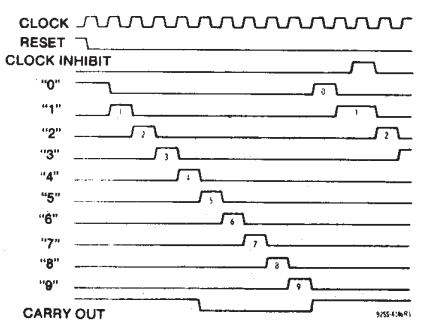
Applications
- Used in LED matrix, LED chaser, and other LED projects
- Binary counter or Binary decoder
- Can be used for dividing by N and counting
- Remote metering, automotive, medical electronics


